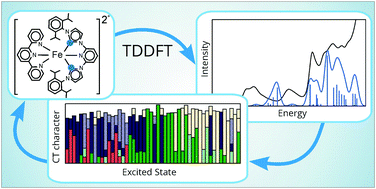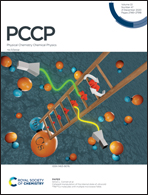The effect of N-heterocyclic carbene units on the absorption spectra of Fe(ii) complexes: a challenge for theory†
Abstract
The absorption spectra of five Fe(II) homoleptic and heteroleptic complexes containing strong sigma-donating N-heterocyclic carbene (NHC) and polypyridyl ligands have been theoretically characterized using a tuned range-separation functional. From a benchmark comparison of the obtained results against other functionals and a multiconfigurational reference, it is concluded that none of the methods is completely satisfactory to describe the absorption spectra. As a compromise using 20% exact exchange, the electronic excited states underlying the absorption spectra are analyzed. The low-lying energy band of all the compounds shows predominant metal-to-ligand charge transfer (MLCT) character while the triplet excited states have metal-centered (MC) nature, which becomes more pronounced with increasing the number of NHC-donor groups. Excited MC states with partial charge transfer to the NHC-donor groups are higher in energy than comparable states without these contributions. The presence of the low-lying MC states prevents the formation of long-lived MLCT states.

- This article is part of the themed collection: Quantum Theory: The Challenge of Transition Metal Complexes


 Please wait while we load your content...
Please wait while we load your content...